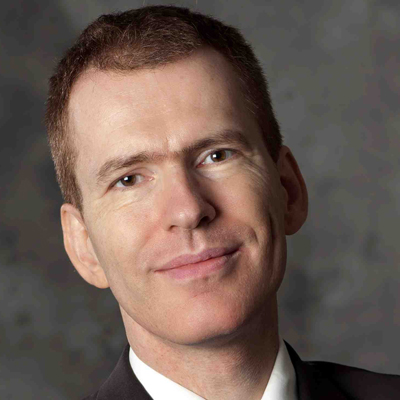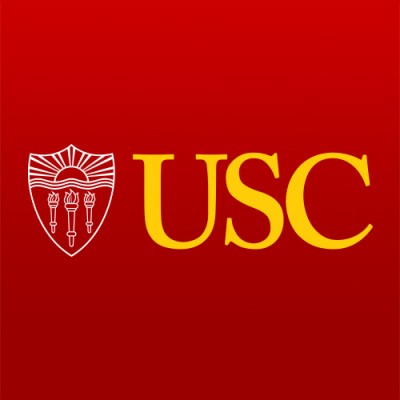Providing the basis for ultra-fast wireless data transmission and precision localization systems
In a world where watching a newly released movie no longer requires a trip to Redbox but rather, is just a click away on the computer or more pressingly, doctors in rural parts of the world are able to correspond with those in the developed world to assess the best treatment for a patient, the increased speed of wireless communications systems is becoming increasingly important. Dr. Andreas Molisch, Professor of Electrical Engineering at the University of Southern California, studies physical-layer wireless communications, trying to answer how wireless signals get from one location to the other “over the air,” and transport information in the most efficient way. This research leads to a large number of different applications including localization systems for emergency responders, breathing monitoring for elderly care, and video streaming systems that provide improved entertainment and reduce the general pressure on the wireless Internet. Therefore, while Dr. Molisch’s research itself is basic in nature, it has the potential to influence any application that uses wireless data.
Dr. Molisch’s research is defined by extensive collaborative work with researchers throughout the US and abroad alongside his team of postdocs and graduate students. Over the years, he has worked with more than 100 researchers worldwide, greatly benefiting from the synergies that his and other groups’ complementary knowledge enables. Such collaboration allows for the important integration between theoretical work and experimental; Dr. Molisch’s group work closely with both avenues of science. In so doing, he and his team are effectively providing the basis for ultra-fast wireless data transmission and precision localization systems. Future research is likely to build upon such technologies and to expand into future technologies with notable applications.
Current research includes:
-
Ultra-high-data-rate Transmission Systems: The data rates of current cellular communications systems are somewhere between 100 Mhz and 1 GHz – for all of its users together. The latter qualifier is frequently omitted by marketing, but it means that people get much lower data rates on their cellphones (at least at peak times) than they would get from their wired Internet. To deal with the constant increase in required data rate and increased user numbers, new approaches are needed to increase the data rate. One promising approach for this is “massive MIMO” where base stations with a very large number of antenna elements (more than 100) are used to point towards many different users at the same time, and thus allow each user a high data rate (instead of having to share it with the other users in the cell). On the downside, such large arrays are expensive and energy-hungry. Dr. Molisch is inventing new structures that retain the benefits of the large arrays, but drastically reduce complexity, cost, and energy consumption. Additionally, he and his team are investigating the use of new spectrum ranges, in which lots of bandwidth is available for new services.
-
Wireless Channel Measurement and Modeling: The wireless propagation channel is the medium through which signals are transmitted. It determines not only the fundamental limits of what can be achieved, but also the actual performance of any practical system. In other words, there can be no good system design or testing without a proper understanding of the propagation channel. Dr. Molisch’s group is a world leader in wireless channel measurement and modeling. They have measurement equipment as well as processing algorithms that are unique in the world, and Dr. Molisch has more than 20 years of experience in the area, having received numerous awards and accolades impacting both academic research and the use of channel models in industrial standardization.
-
Ultrawideband Localization Systems: Precise localization of users and devices has a huge number of applications, from location-based services of cellphone users to inventory systems using RFID, to the tracking and health monitoring of patients in a hospital. Many localization systems rely on GPS, which work well in outdoor environments; however, it is still not a feasible option for indoors. Dr. Molisch’s research concentrates on finding alternative methods for these indoor situations, mostly based on time-of-arrival measurements between “anchor nodes” and devices; between devices; and even between devices and persons or objects that do not carry/contain wireless transmitters. He and his team have developed a variety of algorithms that improve the accuracy of such TOA localization. As a practical application, they created a prototype of a “breathing monitoring system” that helps to find not only if there is a breathing person somewhere around, but also exactly where that person is. This can have important applications in elder care especially because no tags or amulets need to be worn by the person, so the system can always work.
-
Wireless Video Transmission: Video transmission is the main driver of the explosive growth in the usage of wireless data transmission. Tablets and large-screen phones have enabled watching feature-length movies at high resolution on mobile devices, thus greatly increasing the amount of data that have to be transmitted. Numerous market predictions anticipate an increase in the amount of data transmitted each day by 10,000 % over the next five years, and wireless video will become the dominant source of wireless traffic. These developments, while opening new business models and potentially improving consumer satisfaction, threaten to completely clog up the already overburdened cellular networks. Over the past years, Dr. Molisch and his team have developed a completely new network paradigm that greatly improves these issues, potentially increasing capacity to keep up with future demand increase for many years to come.
Bio
Dr. Molisch came to research through his fascination with astronomy. As a teenager, he attended many courses and seminars in addition to building a telescope to help his observations. However, as it became time to decide his major, he was eager to pursue something that he felt could have a more immediate impact. Yet, he was still very enthusiastic about a deep research component that would go beyond “tinkering.” While some of his friends saw communications engineering as a means to repair TVs, Dr. Molisch was fascinated by the confluence of mathematics, physics, and engineering as a means to create something that -- ten years down the road -- people would actually use. This fundamental motivation has stayed consistent over the years and has developed into a lifelong professional career in communications engineering, enabling him to continue to discover new and fascinating areas within communications.
His professional career led Dr. Molisch from Austria, to Sweden, to the US, sometimes working in industry, and sometimes in academia. After obtaining his Ph.D. in Austria, he was assistant, and then associate professor at Vienna University of Technology. He subsequently moved to AT&T (Bell) Labs in New Jersey, Lund University (Sweden), and Mitsubishi Electric Research Labs (Cambridge, MA), before joining the University of Southern California in 2009. Over the course of his career, he has published 4 books (among them a widely used textbook on wireless communications), 16 book chapters, 420 papers in journals and conferences, as well as 80 patents. He has been the chair of various international conferences, editor in leading professional journals, and chair of various standardization groups. He has received numerous awards, and is Fellow of several professional societies (Institute of Electrical and Electronic Engineering, American Association for the Advancement of Science, Institute of Engineering and Technology), and is a Member of the Austrian Academy of Sciences.
Aside from research, Dr. Molisch spends much of his free time ballroom dancing. In fact, he was a competitive dancer for 20 years. Being from Vienna, Austria originally, he also enjoys listening to, and playing, classical music.
Website: wides.usc.edu


